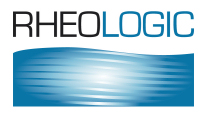Spin Coating
Spin coating is an excellent method for obtaining a wide range of coating thicknesses of high quality on small samples. However, because it is so susceptible to contamination (one bit of dust will give a large streak) it's only really useful when done in a cleanroom.
Many things are going on at the same time with spin coating so it's rather hard to use intuition to come up with the correct thickness. Some time spent with TopCoat quickly lets you find optimal conditions.
First you have to decide if you are spinning 100% solids, in which case there is no evaporation and one set of formulae is used. In this example the more usual case of an evaporating solvent is used. As it happens, this case is impossible to model exactly because evaporation rates and viscosity-% solids curves need to be known for your system, and these are generally unavailable. So some well-tested rules of thumb are codified in the modeller to give you some good guides for what you should expect to find.

The first thing you find by playing with the sliders is that neither time (above a certain minimum) nor wet thickness play a role. The fact that the starting wet thickness makes no difference means that you can flood the disk with an arbitrary amount of liquid. This means that you only need to control the three critical variables: % solids , RPM and (not shown in this screen shot) viscosity.
Keeping the same % solids and viscosity, going up to 2500, then 5000 rpm will give you

50.3µm

and 35.6µm respectively.
If the viscosity is reduced from 100cP to 10cP the thickness reduces

to 16.5µm.
Although the absolute values can't be relied on for the reasons stated, the relative trends will be very useful. So before you go into your cleanroom you can have a sensible range of solutions with % solids and viscosity which should give you a good chance of homing in on the right thickness rather quickly.
